Influences of Roughness Sampling Interval and Anisotropy on Shear Failure Mechanism of Rock Joint Surface
Abstract
:1. Introduction
2. Materials and Methods
2.1. Collection of Rock Joint Specimen Point Clouds
2.2. Direct Shear Tests
3. Influence of Non-Stationary Joint on Roughness
3.1. Reasons for Non-Stationary Point Clouds
3.2. Removing the Non-Stationary Feature of Point Clouds
4. Estimation of Joint Surface Roughness
4.1. Methods Used to Evaluate JRC
4.2. Size Effect of Regular Sampling Interval
4.3. Non-Equal Interval Sampling Method
4.4. Roughness Anisotropy
5. Shear Failure Mechanism of Rock Joints
6. Conclusions
Author Contributions
Funding
Institutional Review Board Statement
Informed Consent Statement
Data Availability Statement
Conflicts of Interest
References
- Faraji, M.; Rezagholilou, A.; Ghanavati, M.; Kadkhodaie, A.; Wood, D.A. Breakouts derived from image logs aid the estimation of maximum horizontal stress: A case study from Perth Basin, Western Australia. Adv. Geo-Energy Res. 2021, 5, 8–24. [Google Scholar] [CrossRef]
- Rullière, A.; Peyras, L.; Breul, P. Influence of Roughness on the Apparent Cohesion of Rock Joints at Low Normal Stresses. J. Geotech. Geoenviron. Eng. 2020, 146, 04020003. [Google Scholar] [CrossRef]
- Zhang, G.; Karakus, M.; Tang, H.; Ge, Y.; Zhang, L. A new method estimating the 2D Joint Roughness Coefficient for discontinuity surfaces in rock masses. Int. J. Rock Mech. Min. Sci. 2014, 72, 191–198. [Google Scholar] [CrossRef]
- Anyim, K.; Gan, Q. Fault zone exploitation in geothermal reservoirs: Production optimization, permeability evolution and induced seismicity. Adv. Geo-Energy Res. 2020, 4, 1–12. [Google Scholar] [CrossRef] [Green Version]
- Barton, N.; Choubey, V. The shear strength of rock joints in theory and practice. Rock Mech. Felsmech. Mec. Roches 1977, 10, 1–54. [Google Scholar] [CrossRef]
- Power, W.L.; Tullis, T.E. Euclidean and fractal models for the description of rock surface roughness. J. Geophys. Res. 1991, 96, 415–424. [Google Scholar] [CrossRef]
- Sayles, R.S.; Thomas, T.R. The spatial representation of surface roughness by means of the structure function: A practical alternative to correlation. Wear 1977, 42, 263–276. [Google Scholar] [CrossRef]
- Brown, S.; Scholz, C. Broad Bandwidth Study of the Topography of Natural Rock Surface. J. Geophys. Res. 1985, 90, 12575–12582. [Google Scholar] [CrossRef]
- Ünlüsoy, D.; Süzen, M. A new method for automated estimation of joint roughness coefficient for 2D surface profiles using power spectral density. Int. J. Rock Mech. Min. Sci. 2020, 125, 104156. [Google Scholar] [CrossRef]
- Aslam, M. A New Method to Analyze Rock Joint Roughness Coefficient Based on Neutrosophic Statistics. Measurement 2019, 146, 65–71. [Google Scholar] [CrossRef]
- Magsipoc, E.; Zhao, Q.; Grasselli, G. 2D and 3D Roughness Characterization. Rock Mech. Rock Eng. 2020, 53, 1495–1519. [Google Scholar] [CrossRef]
- Chen, S.; Zhu, W.; Yu, Q.; Liu, X. Characterization of Anisotropy of Joint Surface Roughness and Aperture by Variogram Approach Based on Digital Image Processing Technique. Rock Mech. Rock Eng. 2015, 49, 855–876. [Google Scholar] [CrossRef]
- Hu, S.; Huang, L.; Chen, Z.; Ji, Z.; Liu, Z. Effect of Sampling Interval and Anisotropy on Laser Scanning Accuracy in Rock Material Surface Roughness Measurements. Strength Mater. 2019, 51, 678–687. [Google Scholar] [CrossRef]
- Ban, L.; Zhu, C.; Qi, C.; Tao, Z. New roughness parameters for 3D roughness of rock joints. Bull. Eng. Geol. Environ. 2018, 78, 4505–4517. [Google Scholar] [CrossRef]
- Zhao, Z.; Guo, T.; Li, S.; Wu, W.; Yang, Q.; Chen, S. Effects of joint surface roughness and orientational anisotropy on characteristics of excavation damage zone in jointed rocks. Int. J. Rock Mech. Min. Sci. 2020, 128, 104265. [Google Scholar] [CrossRef]
- Yong, R.; Huang, L.; Hou, Q.; Du, S. Class Ratio Transform with an Application to Describing the Roughness Anisotropy of Natural Rock Joints. Adv. Civ. Eng. 2020, 2020, 5069627. [Google Scholar] [CrossRef]
- Abolfazli, M.; Fahimifar, A. An investigation on the correlation between the joint roughness coefficient (JRC) and joint roughness parameters. Constr. Build. Mater. 2020, 259, 120415. [Google Scholar] [CrossRef]
- Azinfar, M.; Ghazvinian, A.; Nejati, H. Assessment of scale effect on 3D roughness parameters of fracture surfaces. Eur. J. Environ. Civ. Eng. 2016, 23, 1–28. [Google Scholar] [CrossRef]
- Bao, H.; Zhang, G.; Lan, H.; Yan, C.; Xu, J.; Xu, W. Geometrical heterogeneity of the joint roughness coefficient revealed by 3D laser scanning. Eng. Geol. 2019, 265, 105415. [Google Scholar] [CrossRef]
- Ban, L.; Qi, C.; Chen, H.; Yan, F.; Ji, C. A New Criterion for Peak Shear Strength of Rock Joints with a 3D Roughness Parameter. Rock Mech. Rock Eng. 2020, 53, 1755–1775. [Google Scholar] [CrossRef]
- Mo, P.; Li, Y. Estimating the three-dimensional joint roughness coefficient value of rock fractures. Bull. Eng. Geol. Environ. 2017, 78, 857–866. [Google Scholar] [CrossRef] [Green Version]
- Huang, M.; Xia, C.; Sha, P.; Ma, C.; Du, S. Correlation between the Joint Roughness Coefficient and Rock Joint Statistical Parameters at Different Sampling Intervals. Adv. Civ. Eng. 2019, 2019, 1643842. [Google Scholar] [CrossRef] [Green Version]
- Du, S.; Gao, H.; Hu, Y.; Huang, M.; Zhao, H. A New Method for Determination of Joint Roughness Coefficient of Rock Joints. Math. Probl. Eng. 2015, 2015, 634573. [Google Scholar] [CrossRef]
- Yong, R.; Ye, J.; Li, B.; Du, S. Determining the maximum sampling interval in rock joint roughness measurements using Fourier series. Int. J. Rock Mech. Min. Sci. 2018, 101, 78–88. [Google Scholar] [CrossRef]
- Yong, R.; Fu, X.; Huang, M.; Liang, Q.; Du, S. A rapid field measurement method for the determination of Joint Roughness Coefficient of large rock joint surfaces. KSCE J. Civ. Eng. 2017, 22, 101–109. [Google Scholar] [CrossRef]
- Huan, J.; He, M.; Zhang, Z.; Li, N. A New Method to Estimate the Joint Roughness Coefficient by Back Calculation of Shear Strength. Adv. Civ. Eng. 2019, 2019, 7897529. [Google Scholar] [CrossRef] [Green Version]
- Renaud, S.; Saichi, T.; Bouaanani, N.; Miquel, B.; Quirion, M. Roughness Effects on the Shear Strength of Concrete and Rock Joints in Dams Based on Experimental Data. Rock Mech. Rock Eng. 2019, 52, 3867–3888. [Google Scholar] [CrossRef]
- Ge, Y.; Lin, Z.; Tang, H.; Zhao, B.; Chen, H.; Xie, Z.; Du, B. Investigation of the effects of nonstationary features on rock joint roughness using the laser scanning technique. Bull. Eng. Geol. Environ. 2020, 79, 3163–3174. [Google Scholar] [CrossRef]
- Bitenc, M.; Kieffer, D.; Khoshelham, K. Range Versus Surface Denoising of Terrestrial Laser Scanning Data for Rock Discontinuity Roughness Estimation. Rock Mech. Rock Eng. 2019, 52, 3103–3117. [Google Scholar] [CrossRef] [Green Version]
- Li, Y.; Zhang, Y. Quantitative estimation of joint roughness coefficient using statistical parameters. Int. J. Rock Mech. Min. Sci. 2015, 100, 27–35. [Google Scholar] [CrossRef] [Green Version]
- El-Soudani, S.M. Profilometric analysis of fractures. Metallography 1978, 11, 247–336. [Google Scholar] [CrossRef]
- Yu, X.; Vayssade, B. Joint profiles and their roughness parameters. Int. J. Rock Mech. Min. Sci. Geomech. Abstr. 1991, 28, 333–336. [Google Scholar] [CrossRef]
- Myers, N.O. Characterization of surface roughness. Wear 1962, 5, 182–189. [Google Scholar] [CrossRef]
- Kwon, T.H.; Hong, E.S.; Cho, G.C. Shear behavior of rectangular-shaped asperities in rock joints. KSCE J. Civ. Eng. 2010, 14, 323–332. [Google Scholar] [CrossRef]
- Li, Y.; Liu, C.; Liu, L.; Sun, J.; Liu, H.; Meng, Q. Experimental study on evolution behaviors of triaxial-shearing parameters for hydrate-bearing intermediate fine sediment. Adv. Geo-Energy Res. 2018, 2, 43–52. [Google Scholar] [CrossRef] [Green Version]
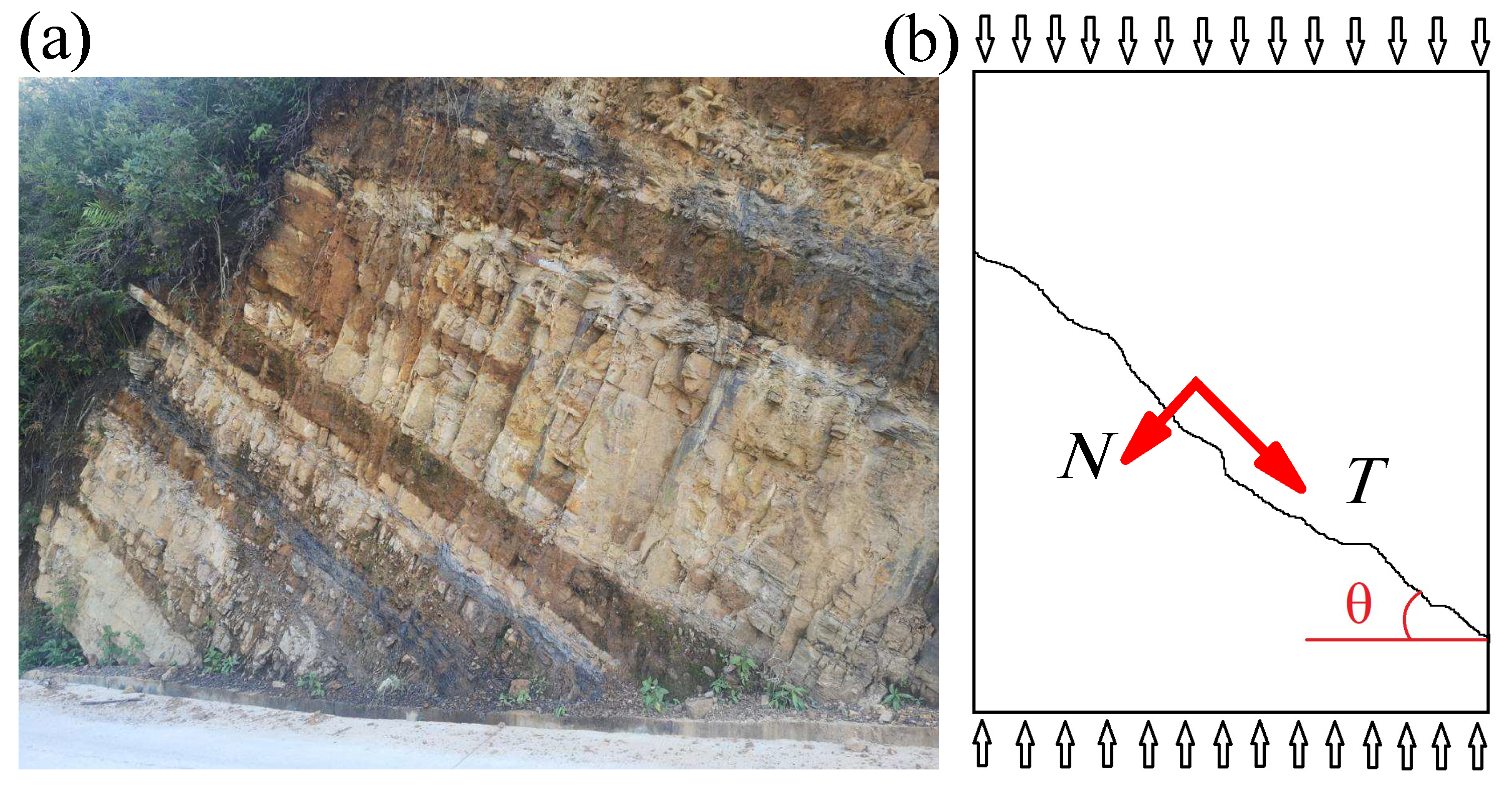
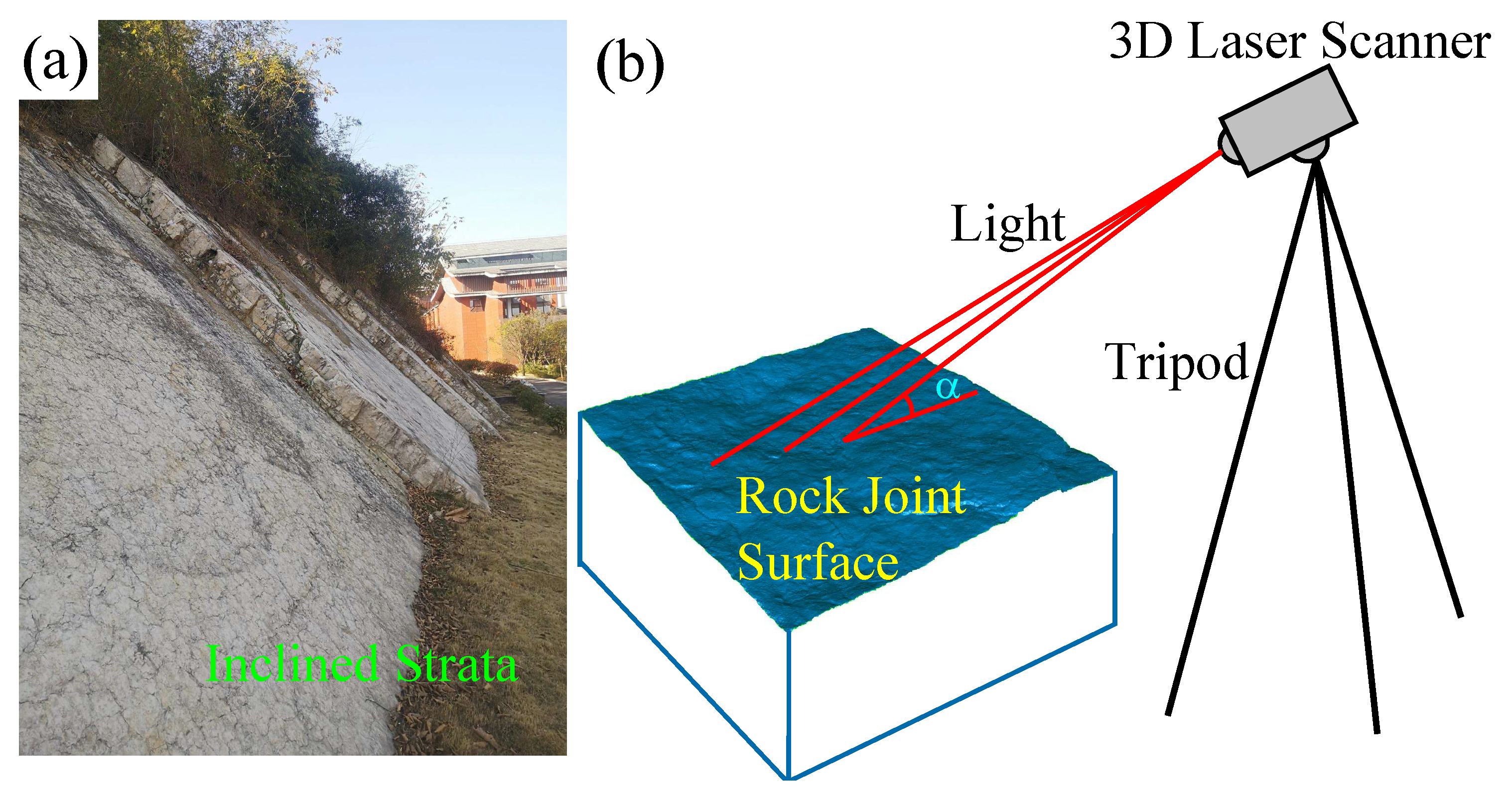
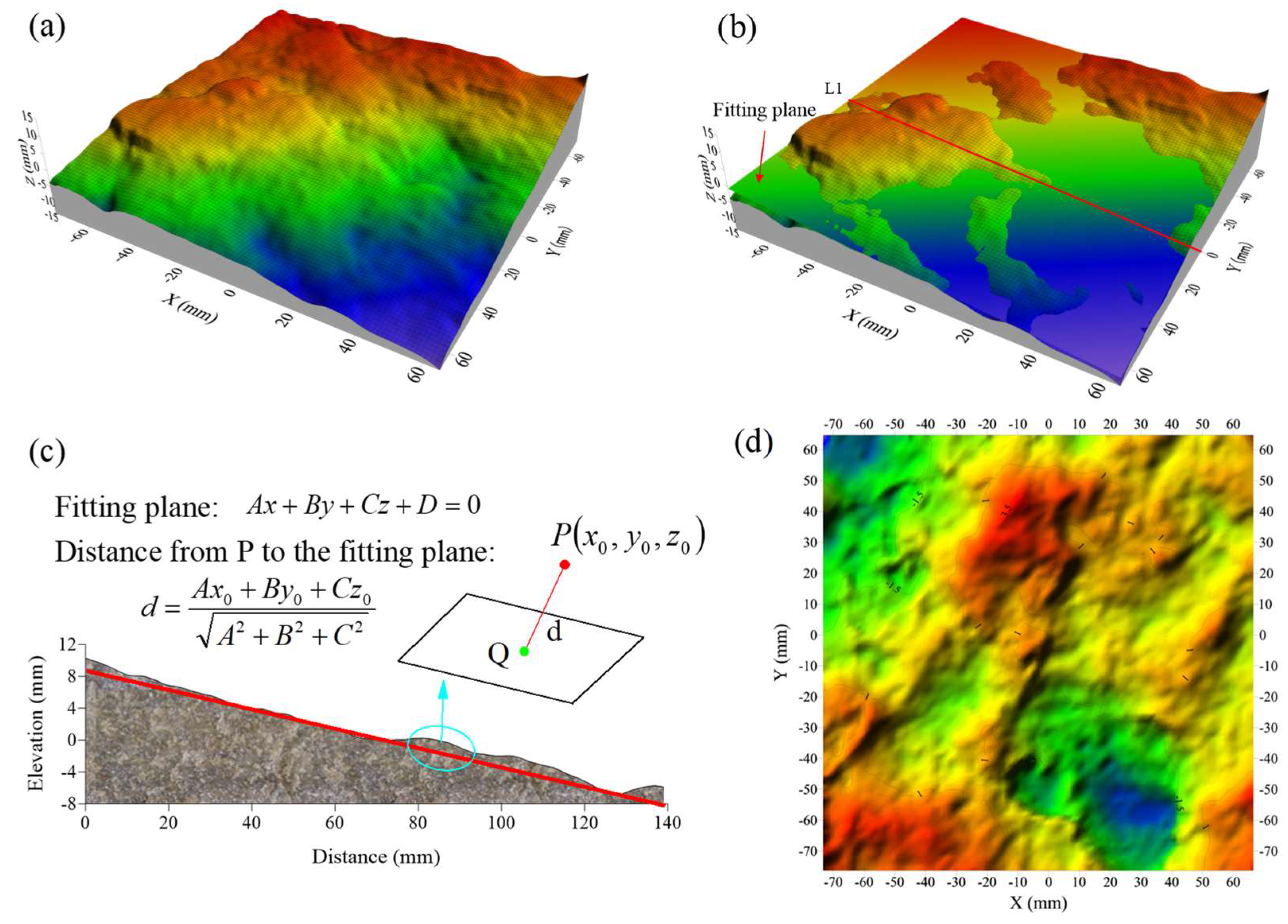
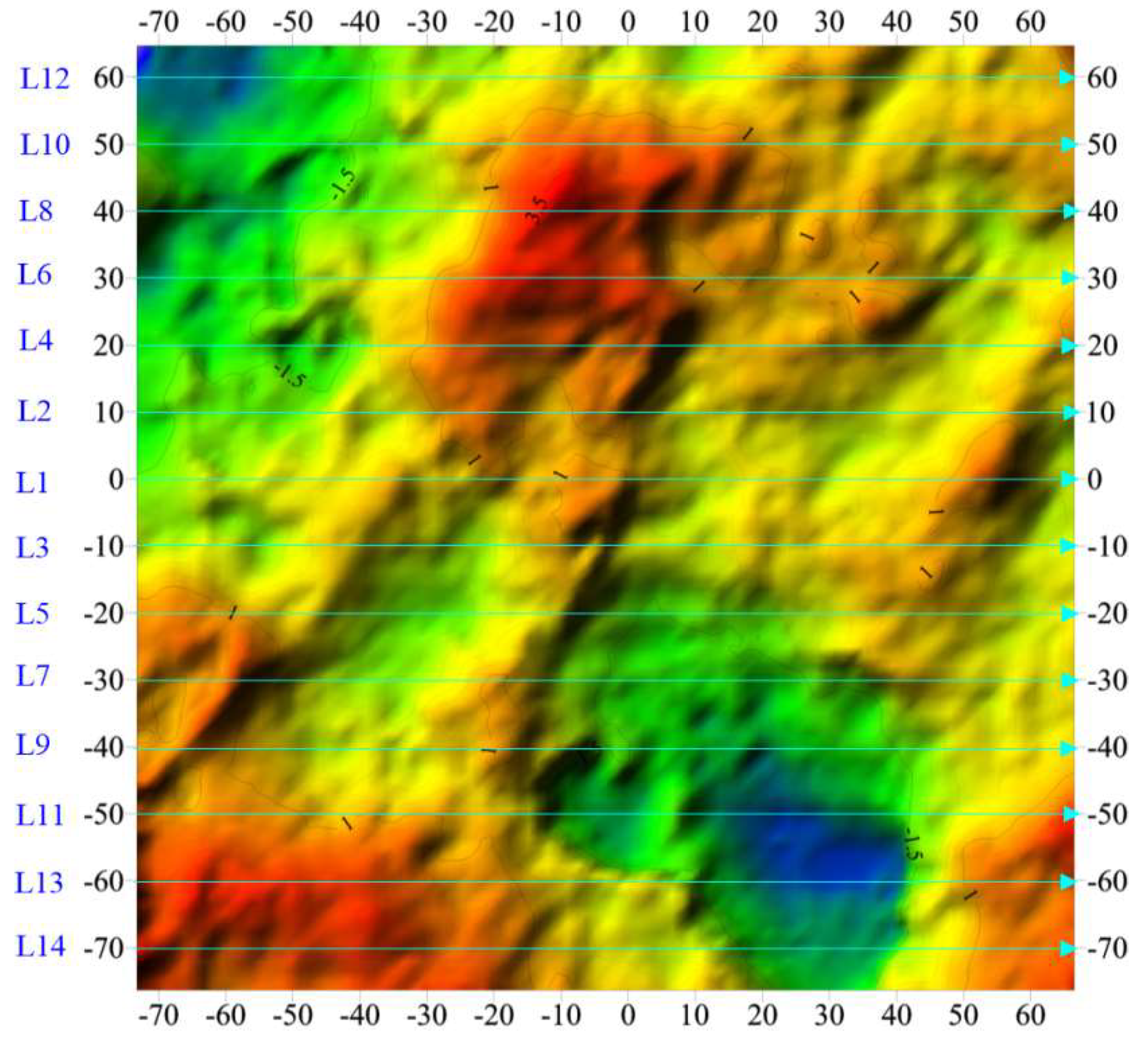
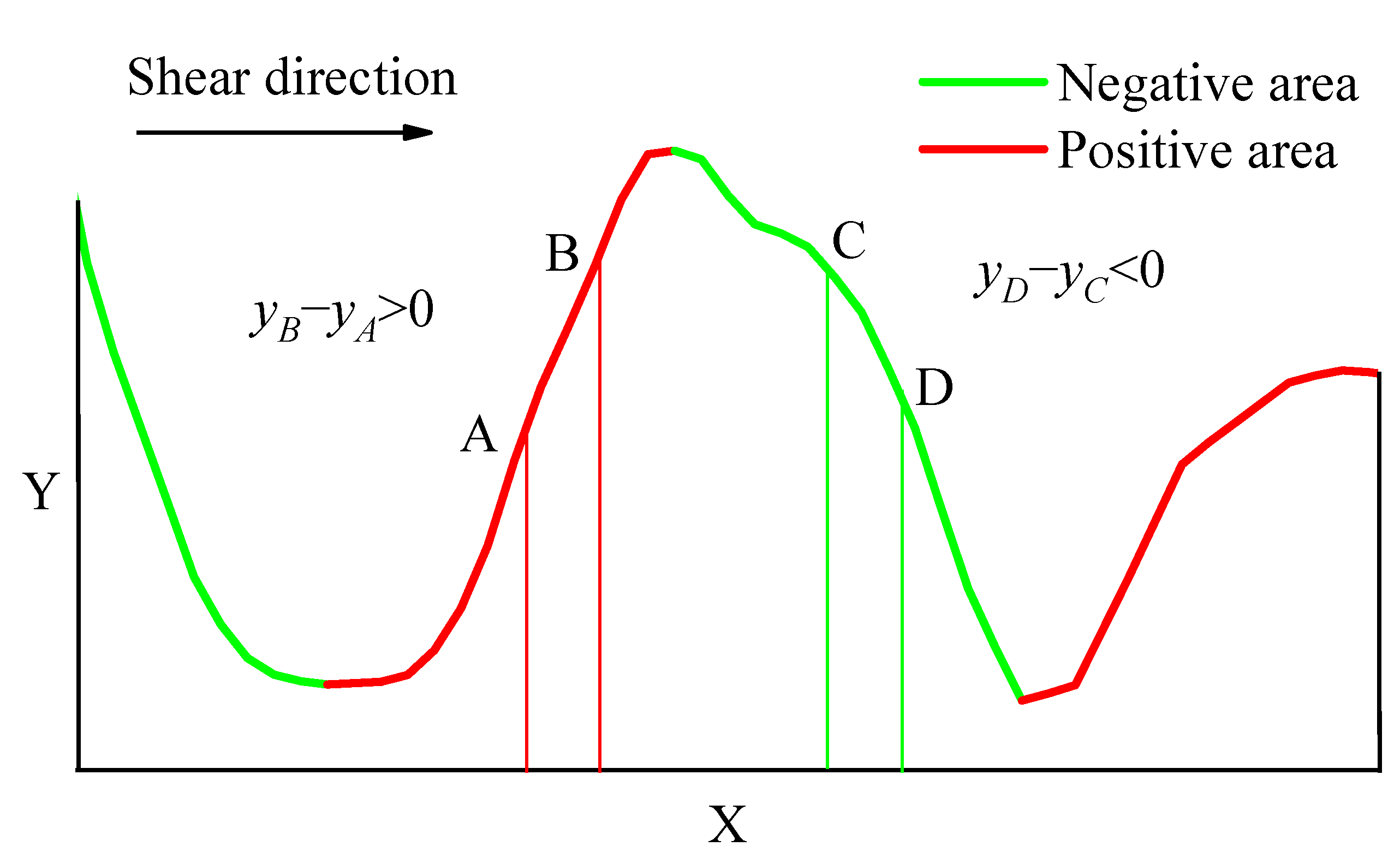
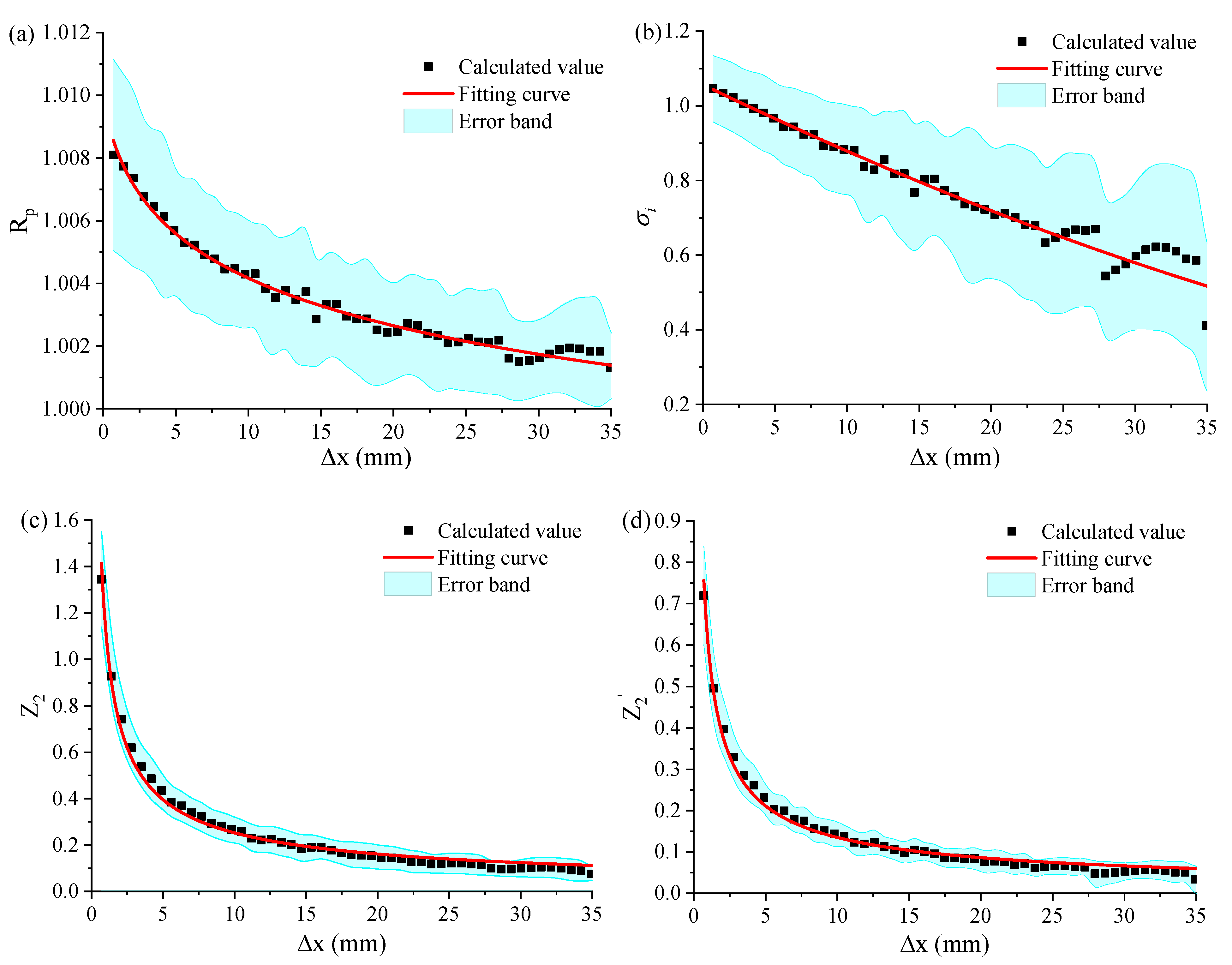
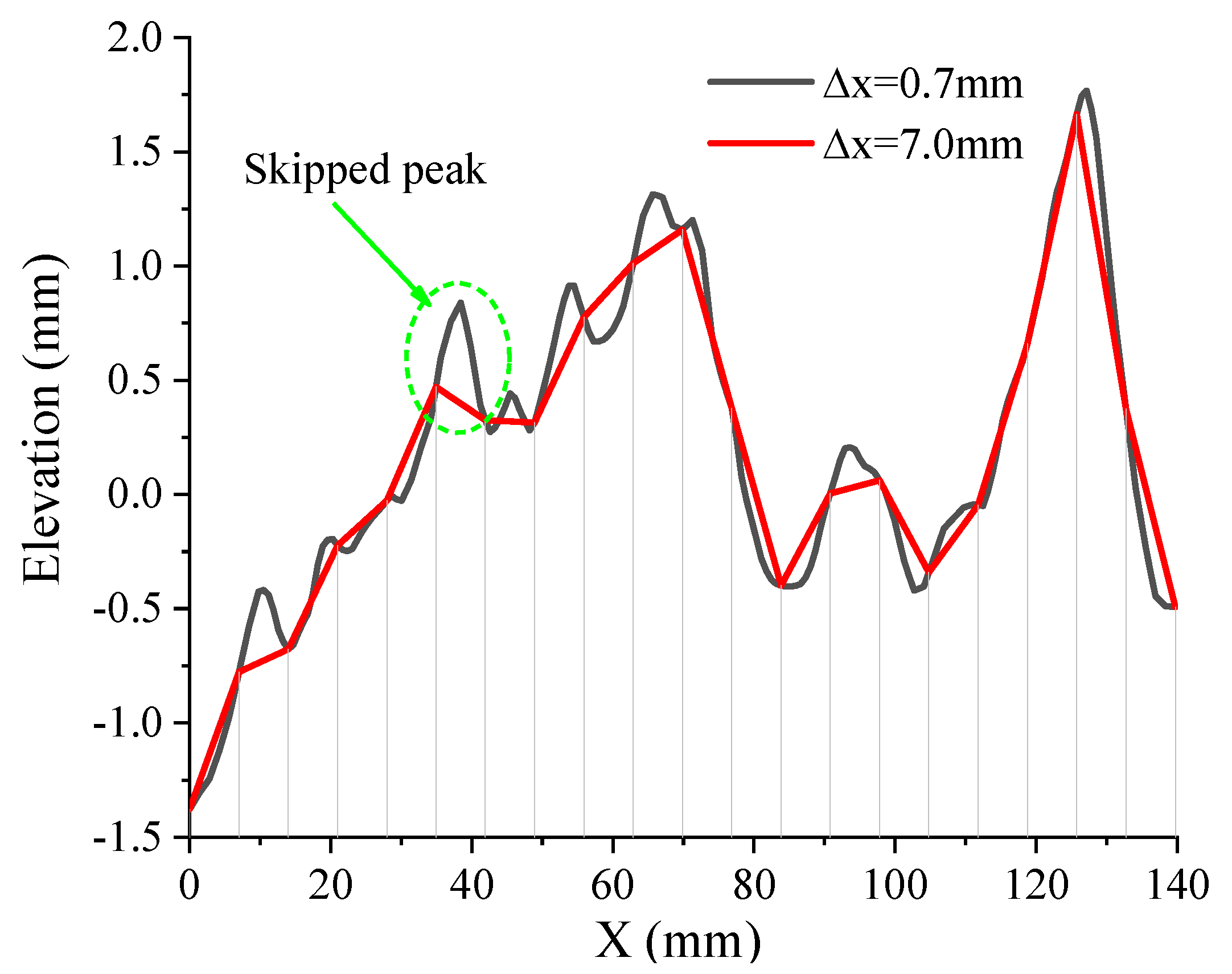
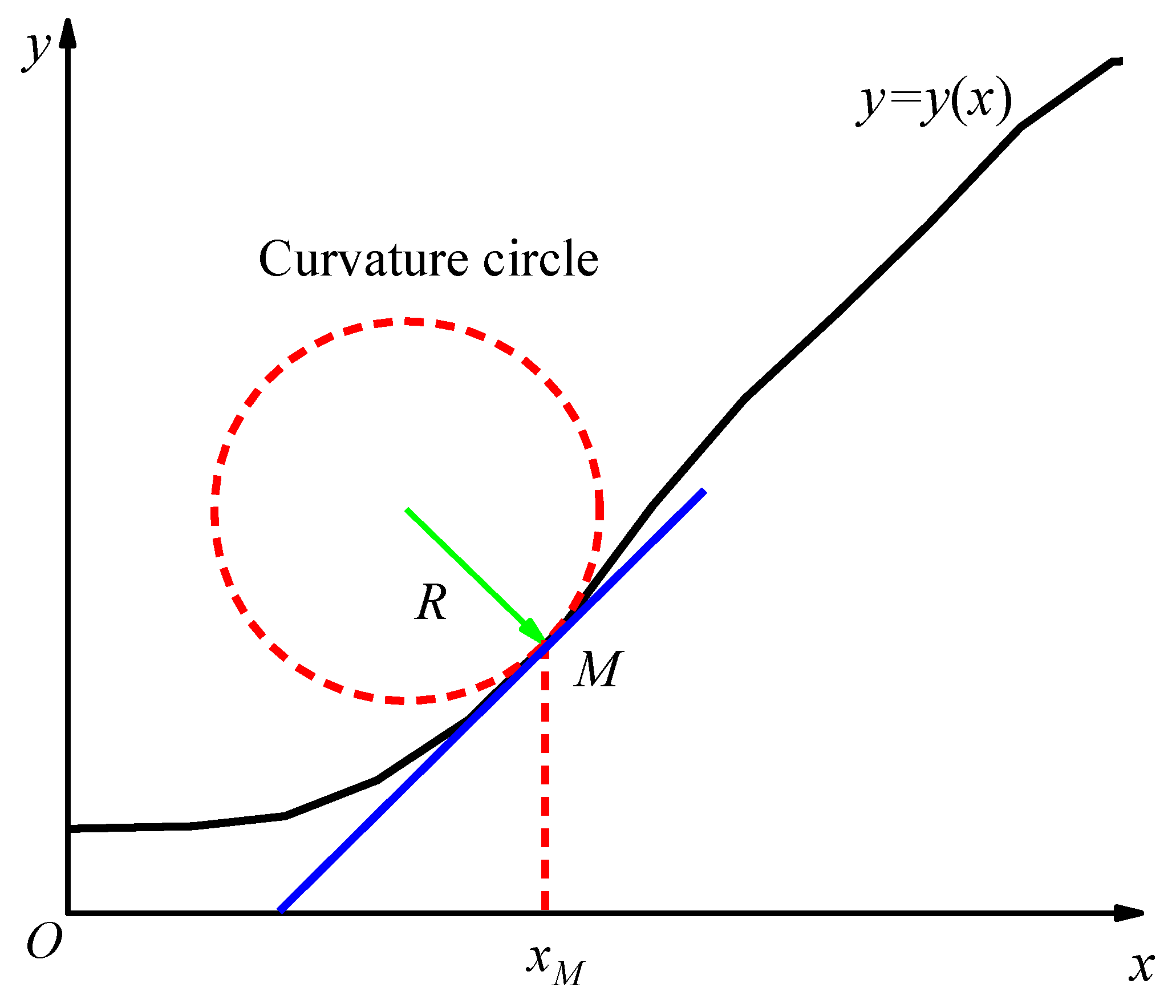
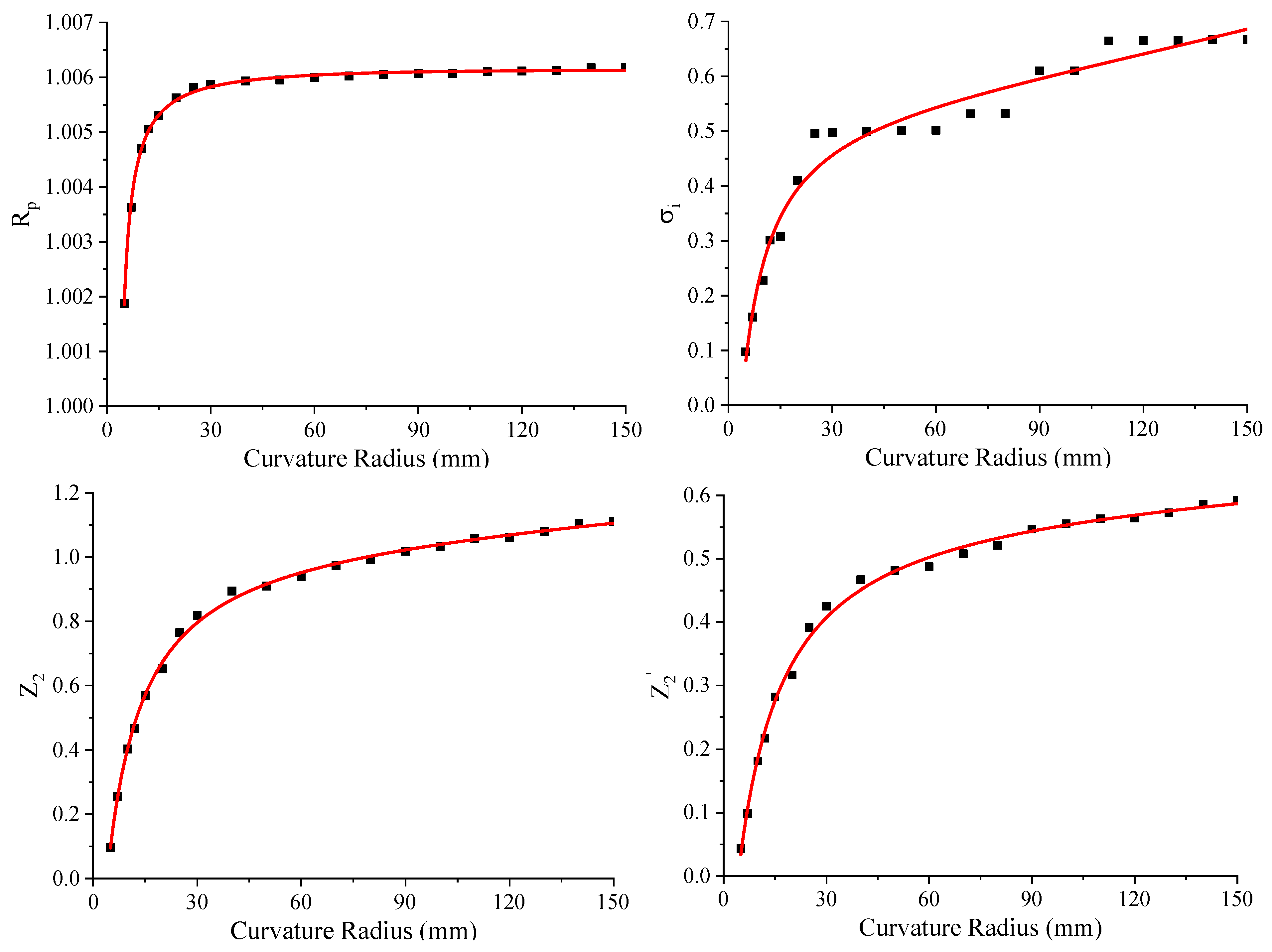
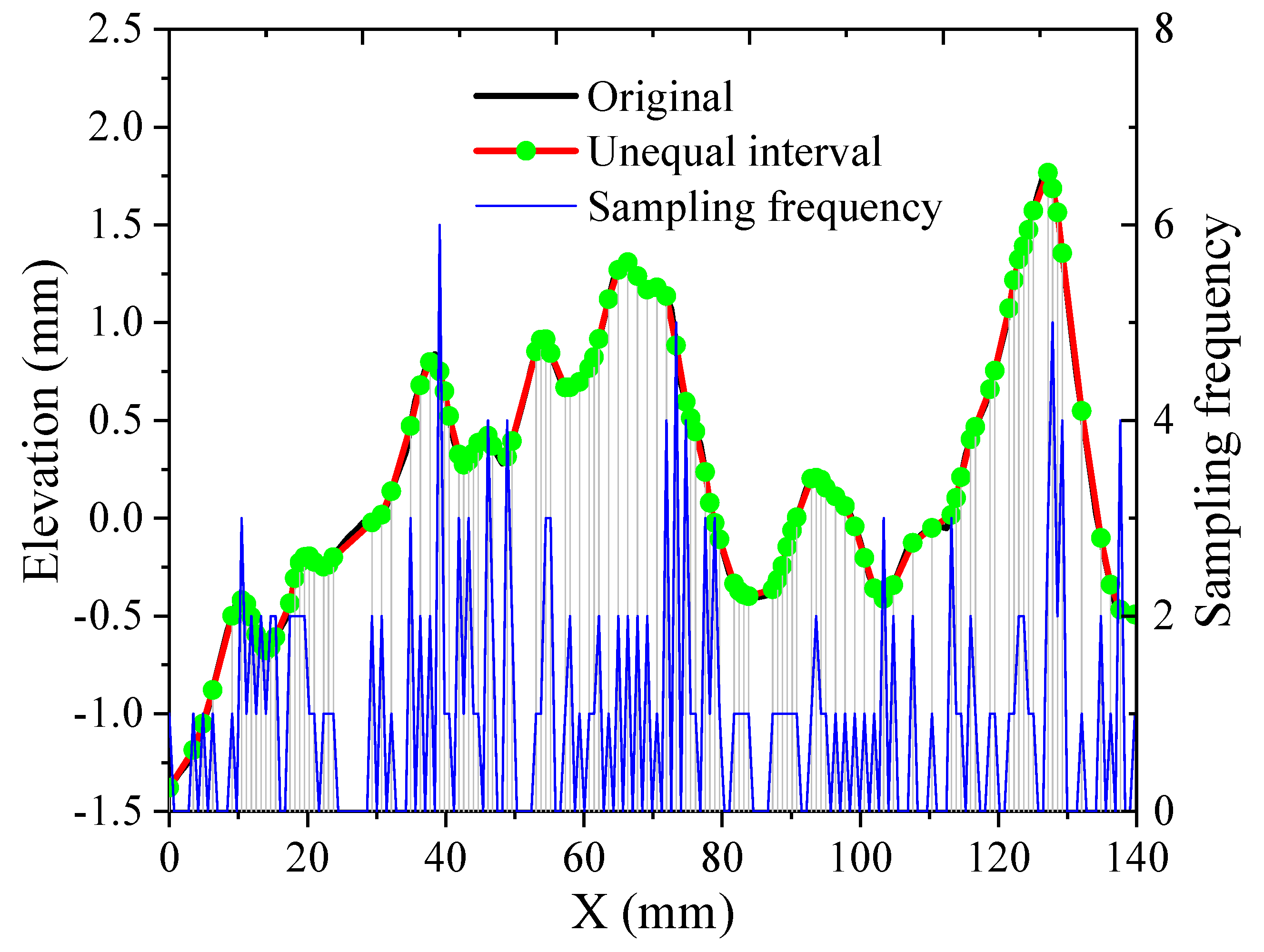


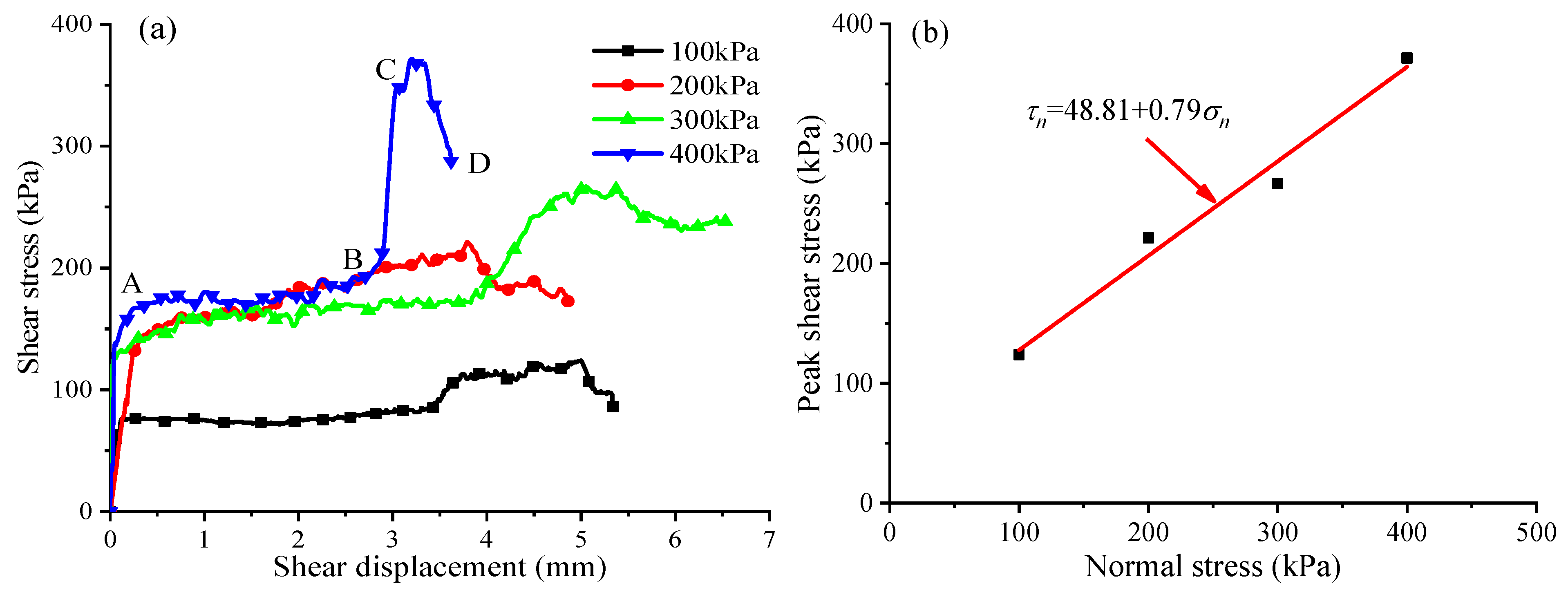
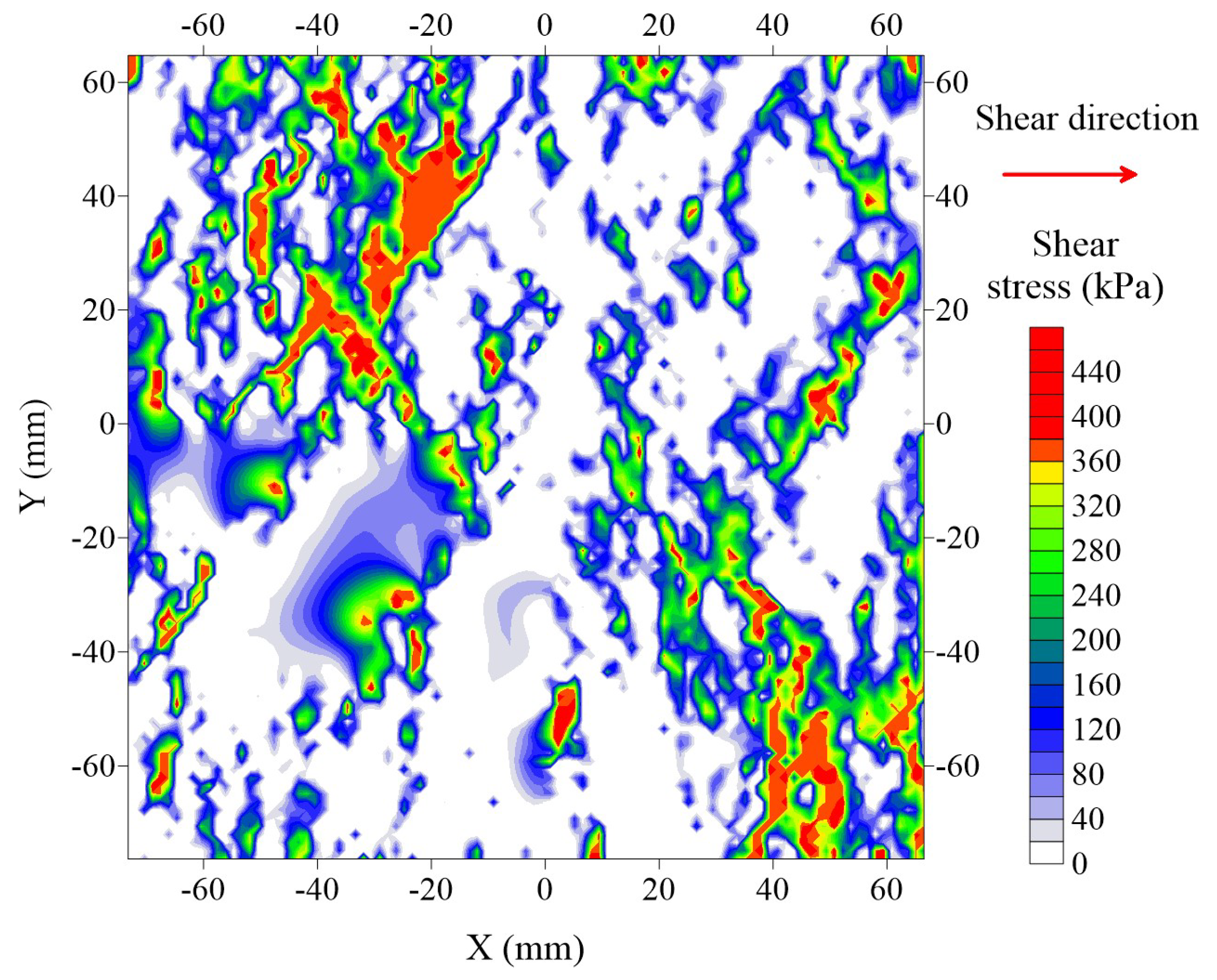
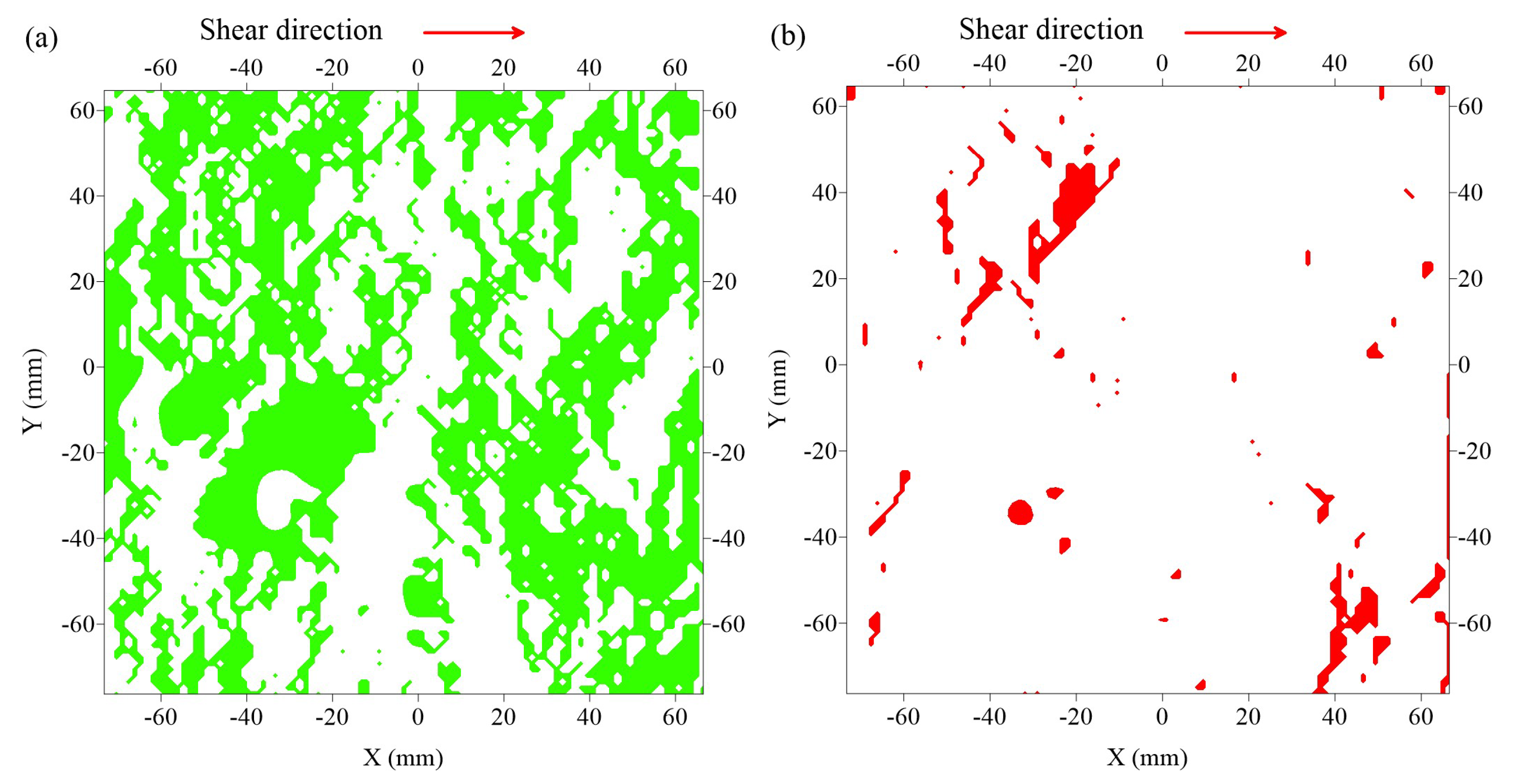
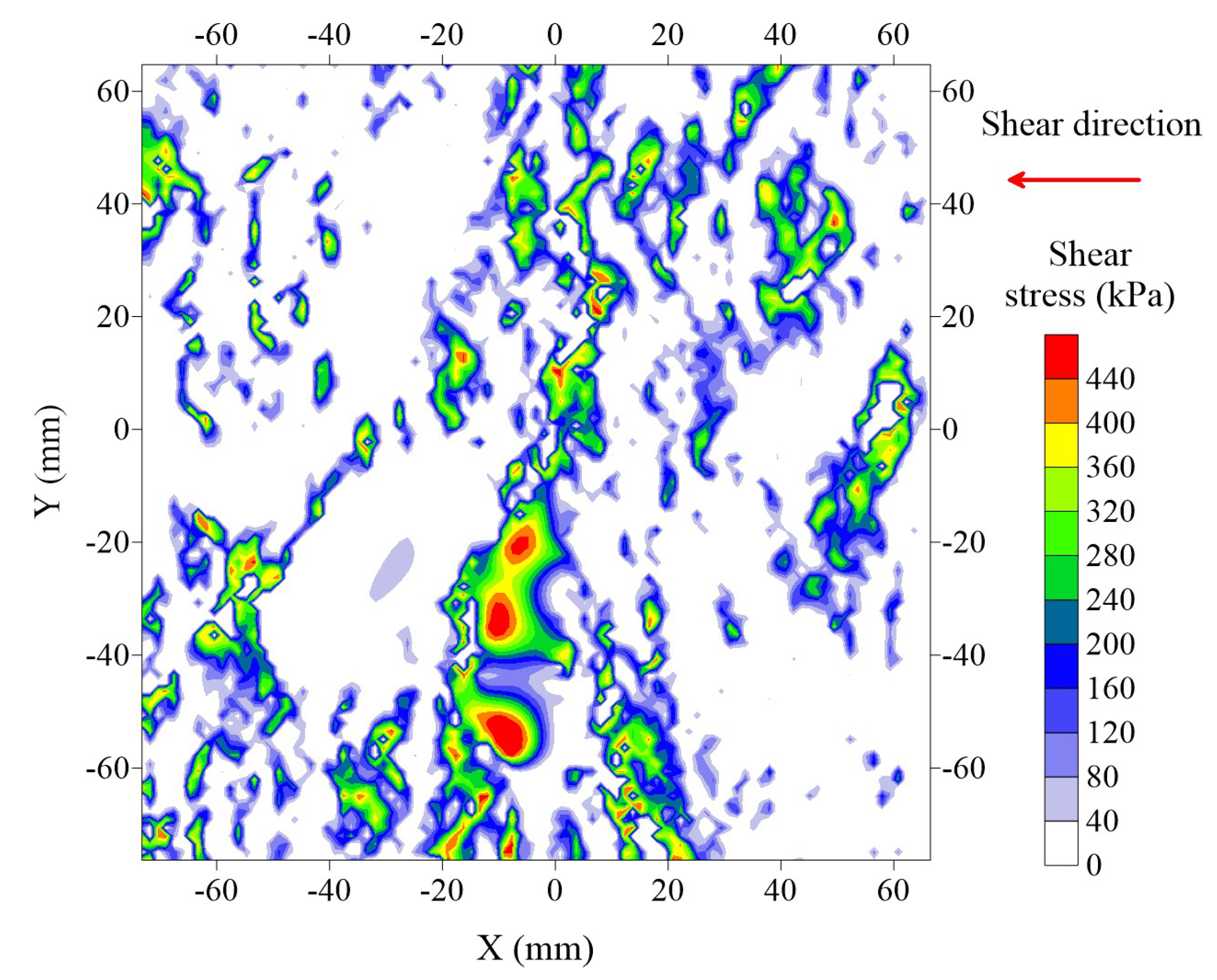
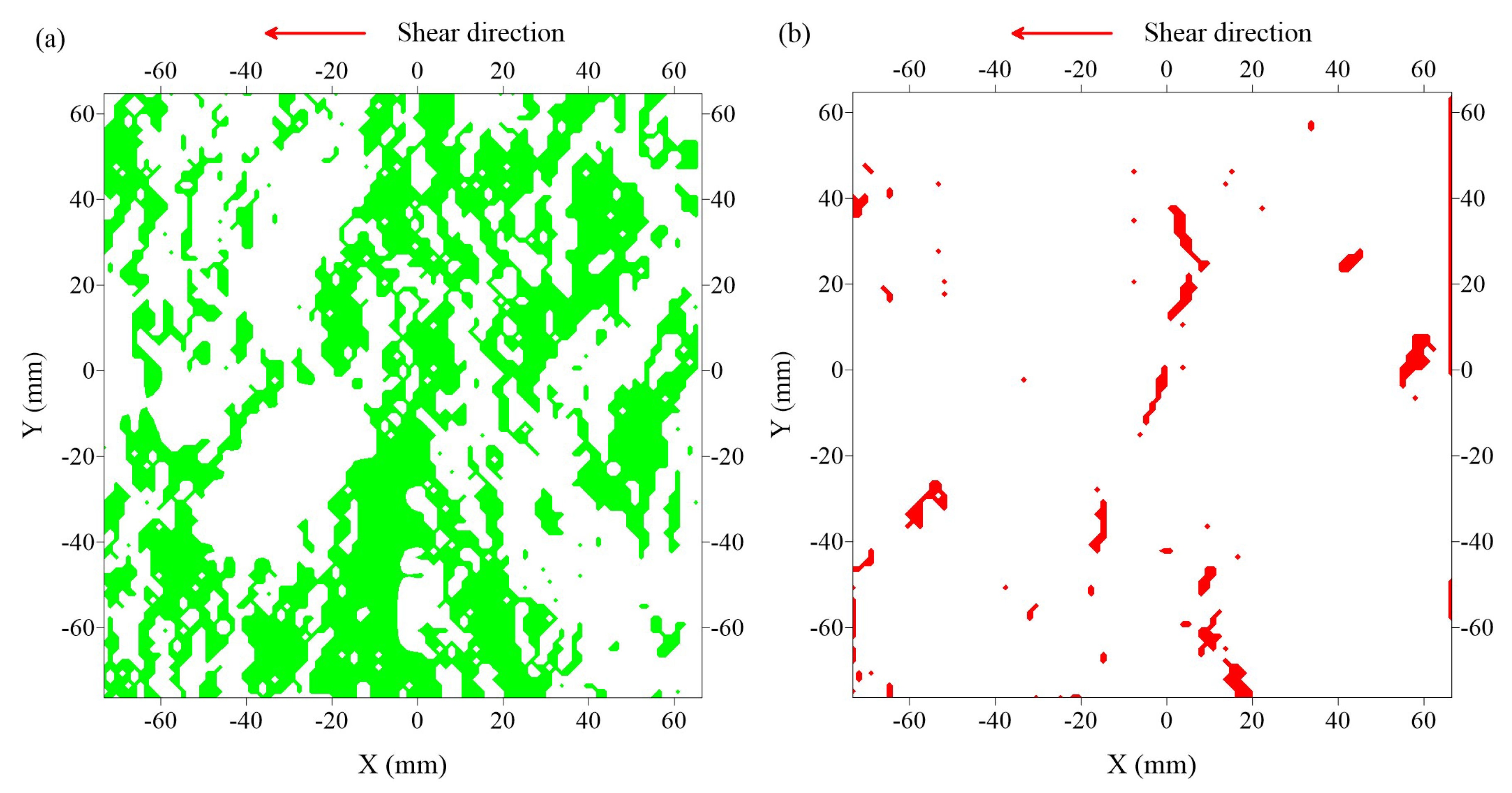
| Roughness Parameters | Rp | Z2 | Z2′ | σi |
|---|---|---|---|---|
| Original profile | 1.0061 | 0.8934 | 0.4783 | 1.0017 |
| Non-equidistant profile | 1.0060 | 0.9036 | 0.4755 | 0.5000 |
| Relative errors (%) | 0.01 | −1.15 | 0.60 | 50.10 |
Publisher’s Note: MDPI stays neutral with regard to jurisdictional claims in published maps and institutional affiliations. |
© 2021 by the authors. Licensee MDPI, Basel, Switzerland. This article is an open access article distributed under the terms and conditions of the Creative Commons Attribution (CC BY) license (https://creativecommons.org/licenses/by/4.0/).
Share and Cite
Chen, F.; Yu, H.; Yang, Y.; Wu, D. Influences of Roughness Sampling Interval and Anisotropy on Shear Failure Mechanism of Rock Joint Surface. Energies 2021, 14, 6902. https://doi.org/10.3390/en14216902
Chen F, Yu H, Yang Y, Wu D. Influences of Roughness Sampling Interval and Anisotropy on Shear Failure Mechanism of Rock Joint Surface. Energies. 2021; 14(21):6902. https://doi.org/10.3390/en14216902
Chicago/Turabian StyleChen, Fan, Hongming Yu, Yilin Yang, and Daoyong Wu. 2021. "Influences of Roughness Sampling Interval and Anisotropy on Shear Failure Mechanism of Rock Joint Surface" Energies 14, no. 21: 6902. https://doi.org/10.3390/en14216902
APA StyleChen, F., Yu, H., Yang, Y., & Wu, D. (2021). Influences of Roughness Sampling Interval and Anisotropy on Shear Failure Mechanism of Rock Joint Surface. Energies, 14(21), 6902. https://doi.org/10.3390/en14216902





